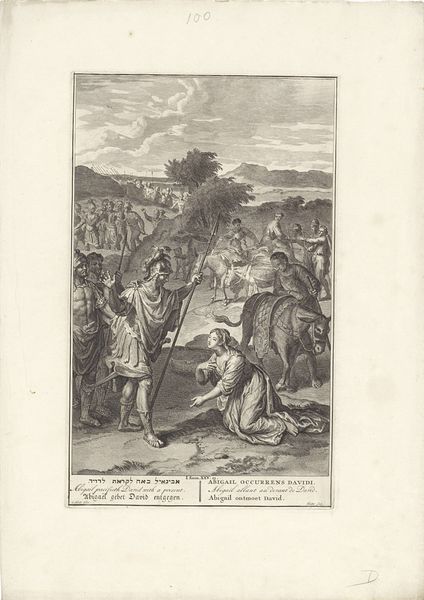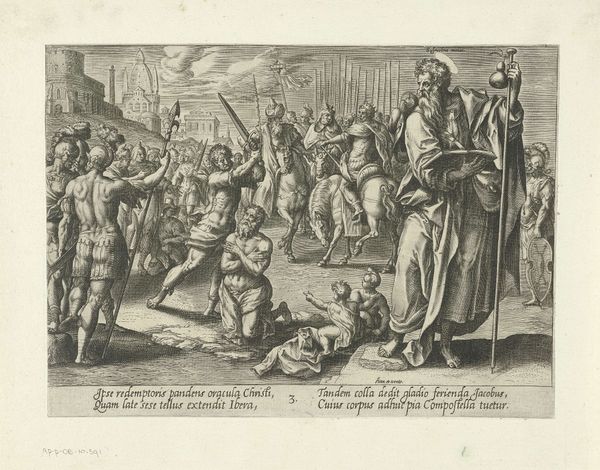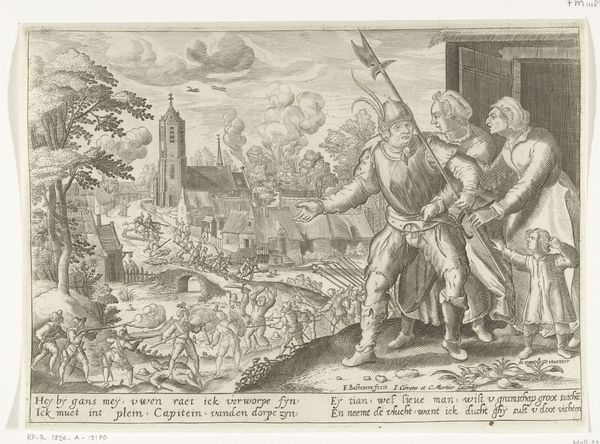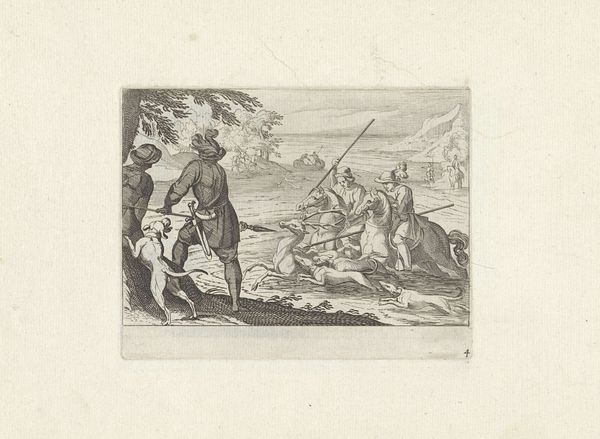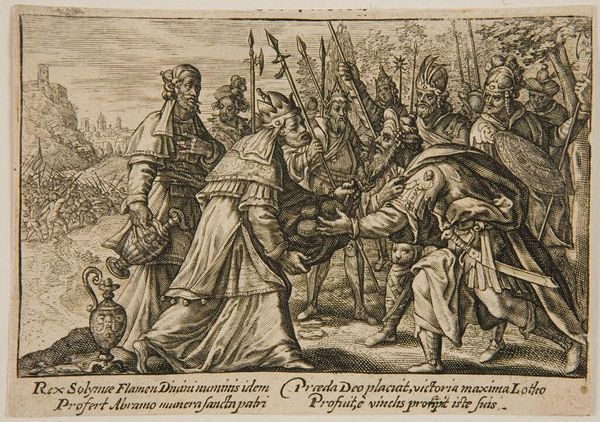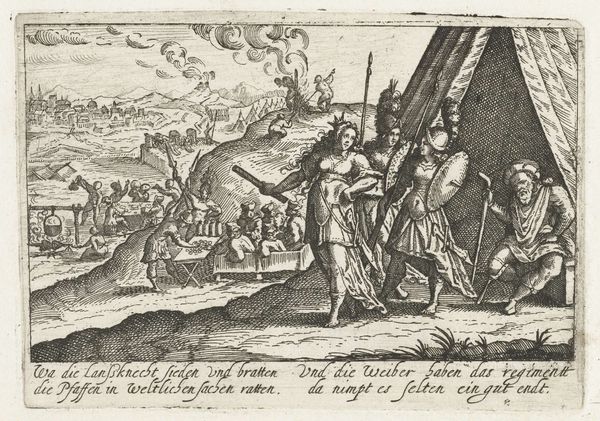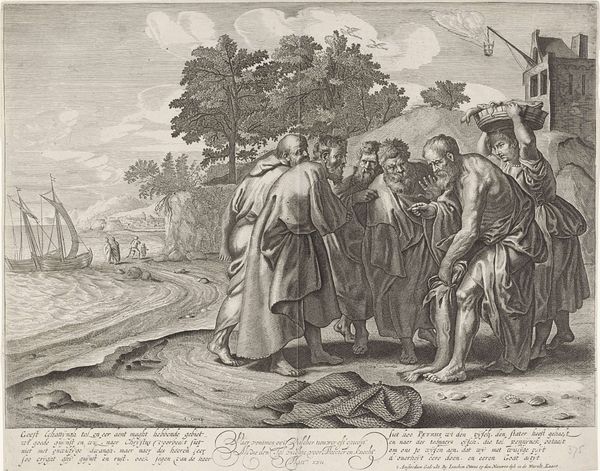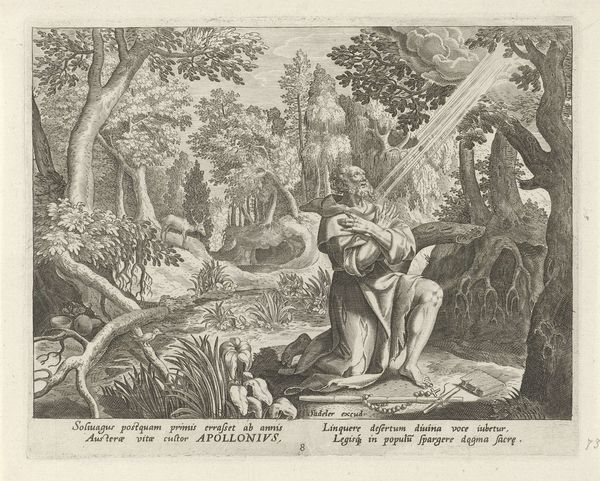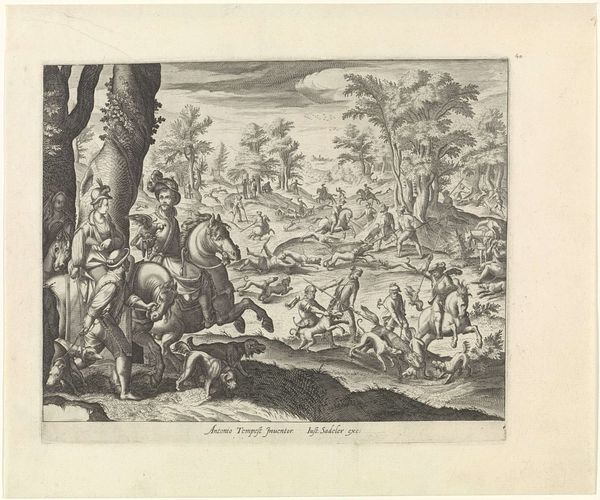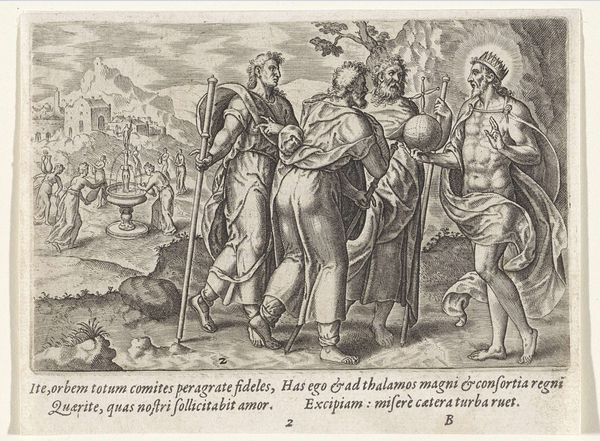
print, engraving
#
narrative-art
#
baroque
# print
#
landscape
#
figuration
#
history-painting
#
engraving
Dimensions: height 84 mm, width 120 mm
Copyright: Rijks Museum: Open Domain
Curator: Here we have "Sara and Abraham Journeying to Canaan," a print created between 1700 and 1750 by Crispijn van de Passe the Younger. It’s currently held at the Rijksmuseum. Editor: My first thought is how theatrical it seems! The poses, the light... almost staged, even for an engraving. And that staff Sara is holding seems awfully grand for a simple journey. Curator: Precisely! The print depicts a scene from Genesis where Abraham leads his family from Ur to Canaan. The artist employs a baroque style to heighten the drama of the narrative, reflecting a visual culture deeply embedded in religious storytelling and moral instruction. Consider how the journey narrative reflects the social upheavals of the time and a desire to create cultural cohesion through biblical narrative. Editor: I'm struck by the contrasting textures – the detailed clothing of the figures versus the more schematic rendering of the landscape. It pulls your eye towards the people. Also, what do you make of that rather stylized walled city in the background? Curator: The walled city serves a crucial iconographic function. In many ways, its use is similar to a backdrop, reminding viewers of the context, even when they may lack historical knowledge. At this period, artists commonly merged contemporary references into biblical scenes to imbue the stories with additional relevance, prompting connections between viewers, their environment, and ancient narratives. Editor: And how does this all tie into the art market then? Where would such an engraving have circulated? Curator: These prints were crucial for disseminating stories and visual culture widely, reaching audiences beyond the elite. Consider this print not just as a piece of art, but as a vital element of baroque social networking and the transmission of moral stories throughout Dutch society. These were popular reproductions found in households all across the social strata. Editor: The precision of line in this engraving is compelling, offering such clear characterisation. I’ll certainly never look at it in quite the same way again. Curator: Precisely. These engravings were crucial for the circulation of biblical knowledge, effectively shaping Dutch cultural and moral viewpoints, as well as enabling widespread participation with visual art narratives and stories.
Comments
No comments
Be the first to comment and join the conversation on the ultimate creative platform.
